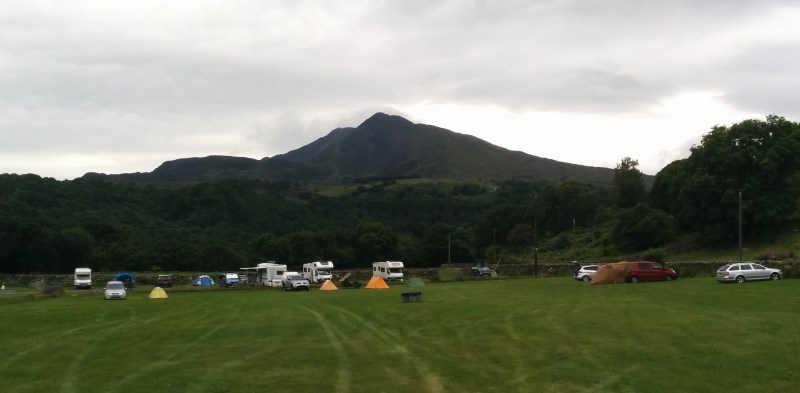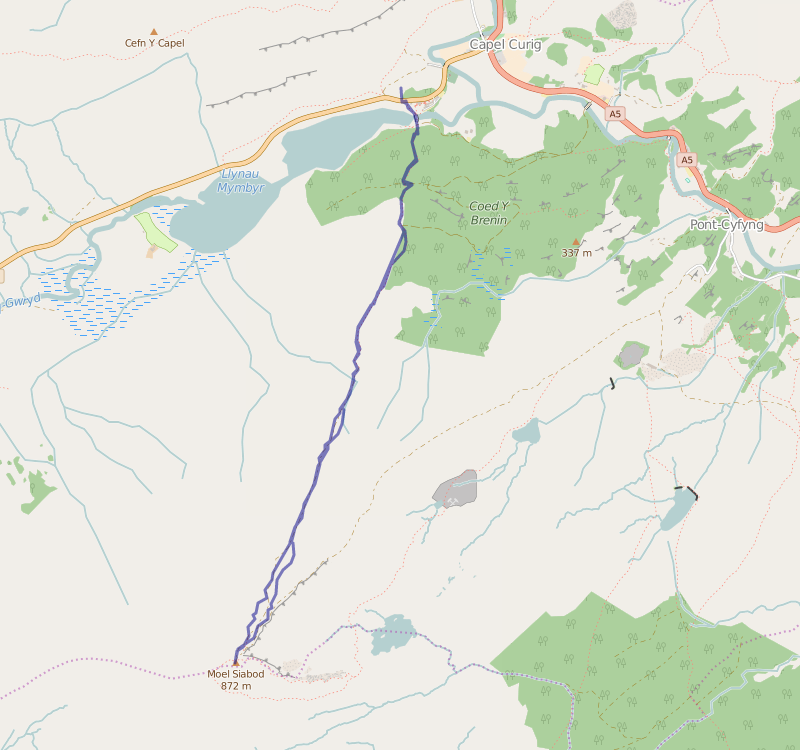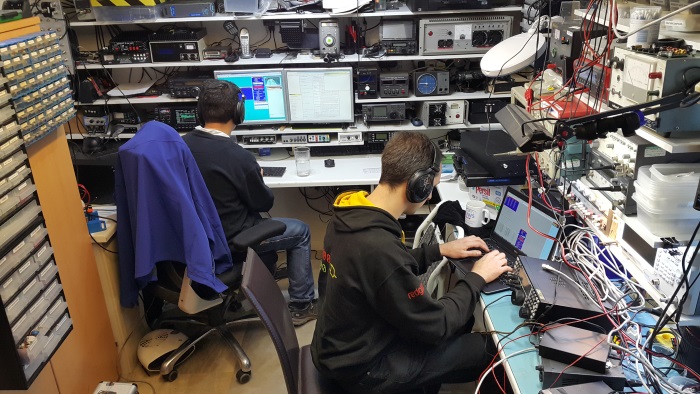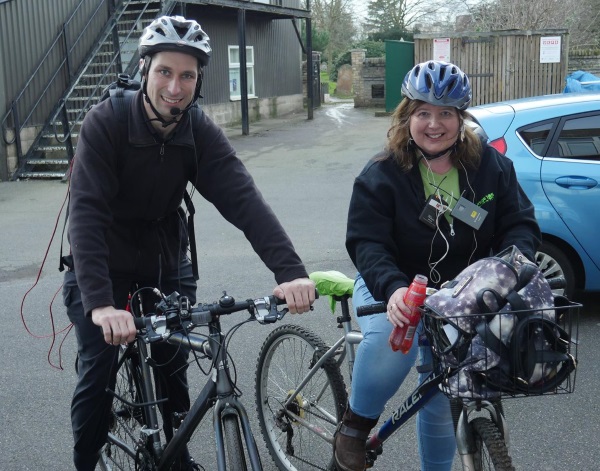

A quick introduction: by day, I'm a DevOps Engineer at Red Gate, a software company in Cambridge, UK. Outside of work, I enjoy both amateur radio (hence the callsign, M0VFC) and community broadcast radio at Cambridge 105. This blog aims to span all those interests - so feel free to ignore the posts that aren't relevant!
Feel free to get in touch on Twitter (@rmc47).
73 / Best wishes,
Rob
I've climbed Snowdon, Summits on the Air reference GW/NW-001, several times over the years, but a glance through my SOTA log showed that either I've never activated it on air, or that I've lost the log! Either way, it felt like an omission.
Armed with a rare weekend free of other events and with promising weather, I set out from Cambridge at 0630 Saturday morning, arriving in Snowdonia around 1100. The car park at Pen-y-pass was full, and Nant Peris looked similarly busy, so I headed on to Llanberis. Given the choice, I'd probably have gone for the Pyg Track or Miners' Track, but I was conscious of time, so headed up the Llanberis path.
As usual, I felt a little silly carrying a fleece, waterproof jacket and gloves as I set off in blue skies and bright sunshine, but also as usual, I was very grateful for them all at the top!
Cloudbase was around 750m, so views from the summit were notable by their absence:


The summit was incredibly busy, so there was no way an HF activation was going to be possible. Thankfully, 2m FM using hand-held and 3-ele yagi was perfectly productive, netting 12 contacts including a couple of summit-to-summits.
Total time came in at a little under five hours: two up, one at the top, and a little under two back down, including a coffee at the half-way house.
Camping overnight at the Dolgam campsite just outside Capel Curig gave me a good view of Sunday's target, Moel Siabod, GW/NW-010:

Sunday's weather wasn't as good as Saturday's, and the forecast suggested the best would be in the morning, so another early start got me packed up and on the road by 0800.
I followed Tom M1EYP's route, and agree with his comments: it's not a hard climb, but it is unrelentingly "up"!
Almost the entire ascent was in the clouds, but the track is relatively obvious for the majority of the trip. I was grateful for the map, compass, and GPS as backup, though, particularly for the last 500m on the way up, and later in re-tracing my steps coming back down.
With the rather wet and miserable weather at the top, I again chose to start on 2m, and again it proved productive enough to easily qualify the summit despite it being relatively early in the morning. There was plenty of room for HF antennas, and zero other folks there, but it seemed wiser to start the descent before the weather got worse.
In the event, the clouds lifted somewhat as I headed down, but the rain continued - until I reached the car, of course, at which point it stopped!
GPS track of the trip, excluding a little of the descent where I knocked the power off:

As always, thanks to everyone for the QSOs, and sorry to those I missed.
A very mediocre score from me, 198 QSOs, almost entirely on 80m as a result of a late start.
Bob G3PJT was kind enough to let me use his station remotely for AFS Phone yesterday - you may have spotted the article in RadCom last month. It's an excellent station, and I don't have 80m antennas at home, so it was very welcome.
(Firstly, a disclaimer for anyone concerned about this sort of remote operation: it was used very much as a "long mic lead" setup, with all antennas located in the same place as the single transceiver, located in the same country as me - well, about 20 miles down the road from where I was. The entry submitted has the location of the transceiver, and both that and my operating location were well within the AFS distance limits.)
Having been out looking at a replacement for Flossie (also known as G3PYE/P) in the morning, I then had to run home and finish making the mic cable for the RemoteRig - it was the first time I'd used my control end on SSB! After a quick check at home listening on my local antenna, I packed it up and headed over to Gavin M1BXF's QTH where he and M0BLF were operating his local station as M1BXF.

Why? Two reasons: firstly, we're a social bunch, and the idea of sitting in a shack with other people is much more enticing than sitting on your own, even if you're both independently heads down in your respective radios.
Secondly, as part of the remote station project, we're testing it in as many different configurations as possible, so this was a valuable test of the technology.
Perhaps most importantly, Gav has a good coffee machine.
The morning's activities meant I didn't get to Gav until gone 2pm, and by the time I'd set up the kit and configured the networking, my first QSO was at 1450.
By that time, 40m seemed past its best for inter-G, and I only made around 15 QSOs before moving to 80m at 1510. 80m was much better, with a mix of some nice runs and periods of S&P. The last hour was rather slow, but there was still some activity to be had.
On the remote station front, the RemoteRig operating in K3-TWIN mode is really quite amazing - I used my K3 as if it were the real radio, and Bob's mirrored it at the other end. Audio latency is very low - perhaps a couple of hundred milliseconds round trip, so you don't really notice it.
Receive audio was indistinguishable from local operation, though I did get a couple of reports of problems with TX audio.
I think I sorted the worst of these during the contest (I'd left some network traffic shaping enabled on the PC I was using the terminate the VPN from when I was in Wales with the Youth Team DXpedition last year), but there's still some investigation to be done there. Thanks to those who spent time diagnosing it, especially Chris G3SJJ.
(One more gotcha: I pressed the K3's "REC" button to record a CQ message, to be greeted with "NO DVK" - I think I may need to buy one for Bob if I repeat the exercise!)
Overall, the experiment went well - my final score doesn't do justice to Bob's station, but I'm pretty sure is far more down to my late arrival on the bands than the remote aspect.
Thanks to Bob G3PJT for the use of his station, and Gav M1BXF for his shack.
Another of the "how we do things at Cambridge 105" posts...
For New Year's Eve 2015, we decided to do a repeat of our "Where's Flossie - Live" treasure hunt, but with a difference: it would be around Cambridge, on bicycle! Without the luxury of a vehicle, the challenge was getting two-way broadcast audio and engineering talkback between our studio and Linda, presenting from her bike.
Given the built-up nature of the city and the impossibility of getting an aerial suitably high on a bike, we quickly ruled out using a direct radio link, instead using cellular data - Cambridge has good 4G coverage on most phone networks. Google Hangouts manages pretty good audio quality with relatively low latency, and most mobile phones actually have reasonable audio interfaces in them - but often let down by the internal microphone and speaker.
So, the broadcast setup: my phone, with an iRig Pre presenting audio in and out on useful connectors, connected to two radio mic receivers and a wireless in-ear-monitor transmitter, variously cable-tied to my bike and in my rucksack:

This was all powered by a 12V 7Ah sealed lead-acid battery. Battery capacity was a worry: the radio mic receivers draw about 0.25A each, and I assume the IEM transmitter is similar. That meant an overall discharge rate of about 0.75A, or enough to totally flatten the battery in about nine hours. Fine for a three hour broadcast - if the rather elderly battery was still near its rated capacity!
Linda, on her bike, wore a small headset-style radio microphone allowing her to talk while cycling, and the in-ear-monitor receiver. I carried a second hand-held radio mic allowing her to interview people on location.

An advantage of this setup was that she could venture inside buildings with me remaining outside, maximising our chances of maintaining good cellular coverage - something that worked well at several locations. I could also monitor the broadcast without distracting her from presenting.
Lawrence, M0LCM, was engineering at the studio end, and the two of us also had an amateur radio link available for off-air chat between the two of us to help us liaise. APRSdroid, running on my phone, allowed him to see our location as we moved around the city.